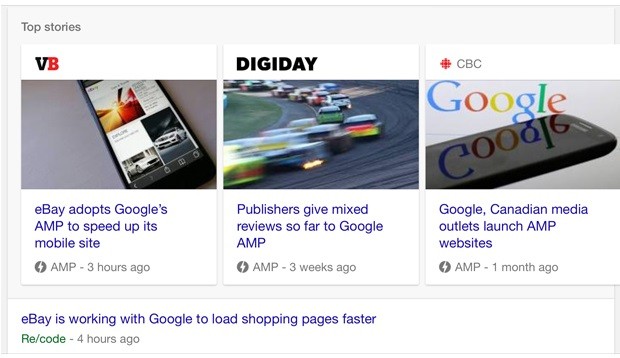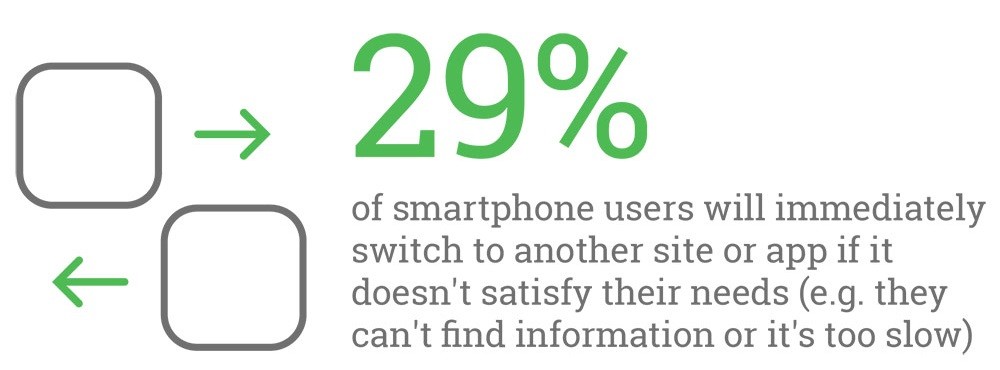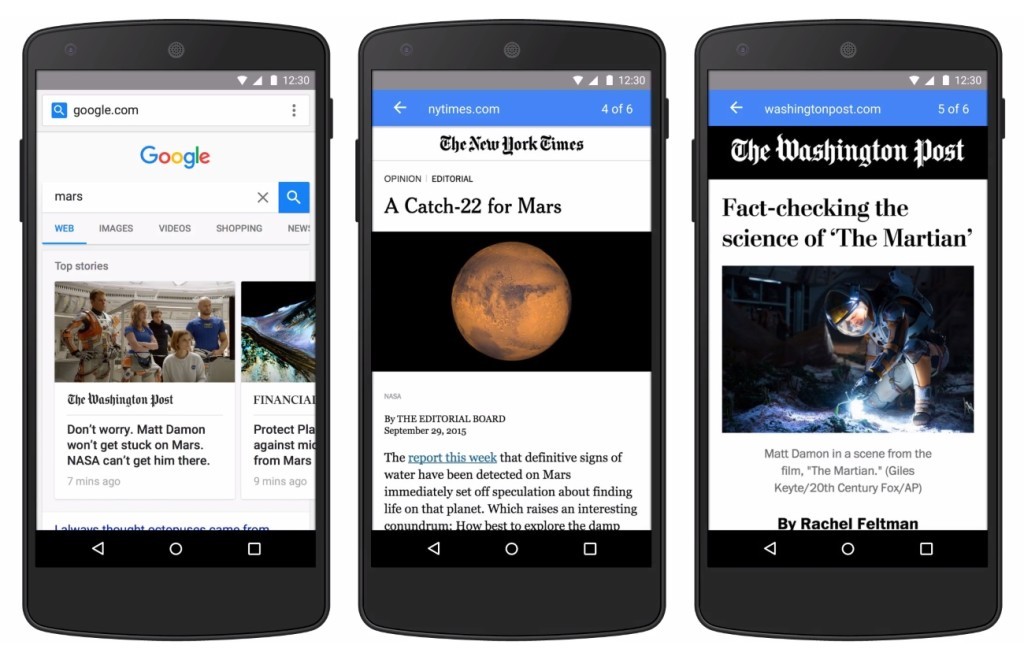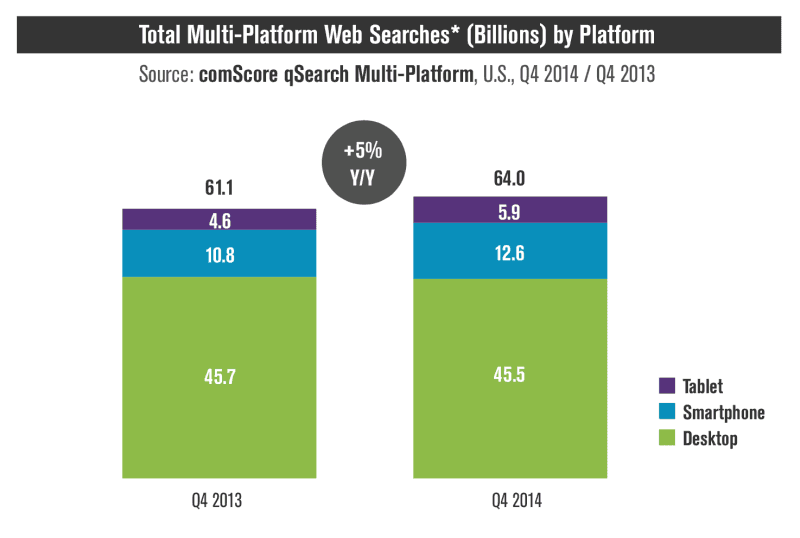
Will Google's Accelerated Mobile Pages Improve Your Rank? A Data Driven Answer
Google introduced Accelerated Mobile Pages (AMP) in search results back in February 2016, as a solution to a big user experience problem for mobile searchers - page speed.
And just like with any new feature Google rolls out, SEOs and webmasters want to know:
Can AMPs help improve rank?
Now that the dust has settled on the rollout and webmasters have started using them, I’ll give a data-driven answer.
But first, a little overview for those of you not familiar with AMPs.
What are AMPs?
According to the AMP Project site, “The Accelerated Mobile Pages (AMP) Project is an open source initiative that embodies the vision that publishers can create mobile optimized content once and have it load instantly everywhere.”
The project relies on HTML to create a simplified version of your site that loads quickly.
And if your pages are AMP-enabled, they can appear in a special carousel in Google search results:

Twitter, Pinterest, WordPress.com, Chartbeat, Parse.ly, Adobe Analytics and LinkedIn are some of Google’s partners integrating AMPs.
In early tests, Jon Parise of Pinterest found that AMP pages load four times faster and use eight times less data than regular mobile-optimized pages, so you can see why AMPs would be appealing to mobile users.
Are they a rank signal?
Since Mobilegeddon came along, we already know that if your pages are mobile friendly is an important rank factor.
But what about AMPs?
At a special press event back in December, Search Engine Land gleaned that AMP pages might get a ranking boost or a “fast” label designation, similar to how Google labels mobile-friendly pages.
But Google’s Gary Illyes confirmed at the SEJ Summit in June that AMP is NOT currently a ranking factor.
Can AMPs help SEO?
AMPs aren’t a magic tool to get a ranking boost, but that doesn’t mean they don’t matter at all for SEO. Here are the roles AMPs can play to improve your rank:
Better user experience
Google’s Mobilegeddon update, which basically mandated that webmasters make their sites mobile friendly or suffer in rank, was in response to a huge user experience problem. Accelerated Mobile Pages are just the next step in that response.
Mobile users are fed up with Google sending them to pages that are hard to read, difficult to navigate, or slow to load – especially if they’re using mobile data.
Check out this statistic from Think with Google:

But here’s the one that matters: 70% of those who switch sites do so because of slow loading times.
So yes, if your pages are AMP-enabled, it can do wonders for your user experience. And better user experience leads to better SEO, such as:
Lower bounce rate
As the above statistic demonstrated, improving your site speed can keep people from getting frustrated and leaving your site.
Google doesn’t want to deliver searchers to sites that just frustrate them, which is why bounce rate is an important ranking factor.
Think your pages load okay? Even one second makes a huge difference:

AMP pages can load 15-85% faster than regular pages, offering a great solution to help lower your bounce rate.
Better clickthrough rate
If searchers who visit your AMP-enabled pages are less likely to bounce, this also means they’re more likely to click through to other pages.
Google considers user interaction with your site as an important indicator of value. Doing something as simple as improving your page speed can do wonders to improve these metrics and help your search rank in the process.
Better visibility
Google’s News carousel appears above the fold on mobile – so carousel content receives way more impressions than the organic results shown below. Illyes confirmed as much at the SEJ Summit: 80% of publishers using AMP pages are getting more views.

Views are good for brand awareness, but better visibility with AMP pages can also influence factors that directly improve rank:
Clicks from search
If your page is shown prominently in Google’s News carousel, it’s more likely to get clicks. Research by Rand Fishkin and others has shown that Google does consider a link’s click volume when determining rank in organic results.
So the better visibility your AMP pages have in search results improves SERP CTR, it should impact your organic results overall.
Backlinks
Better visibility leads to more clicks, and more clicks lead to more people reading your content. If it is newsworthy, informative, and altogether high quality, then better visibility can lead to more backlinks as well.
This matters for rank, a lot. Links are one of Google’s top three rank factors.
And when you’re marketing news content to search, the competition to get links can be stiff.
Every news site and niche blog is covering the same story, so referring domains have a lot of options to choose from when linking. The visibility your content receives in Google’s News carousel gives a competitive edge.
Social signals
The same logic for backlink building can be applied to social sharing. Appearing above organic results improves your clicks, meaning interested readers are more likely to share your content as opposed to a site without AMP pages.
And while Google won’t admit that social signals are a ranking factor outright, they appear to matter a lot.
Research from Searchmetrics found correlations between search rank and social signals on many major social media platforms.

At the same time, getting these social shares means even more visibility, which can lead to more site traffic, more links, and better SEO.
Improve conversions
Just as improving site speed helps reduce your bounce rate, it can also improve clickthrough rate: 90% of publishers using AMPs have a higher CTR, which has to impact on-site conversions.
Sure, you can argue that SEO and conversion optimization are two different things, but isn’t getting conversions the whole point of drawing web traffic from search?
Creating AMP pages as part of your SEO strategy could have a huge impact on your return on investment overall.
Prepare for future changes
Back in May 2015, Google announced officially that more searches happen on mobile devices than desktop, showing a big change compared to previous years:

The trend is only continuing – a recent report found the ratio is now 60/40.
One of Google’s main goals as a business is to deliver what people are looking for, not just in terms of relevancy, but also user experience. That’s why they’ve rolled out two Mobile Friendly updates in the course of a year and are talking of adding more mobile UX metrics, like site speed, as rank factors in the future.
AMPs or mobile page speed in general might not be rank factors at the moment, but if you ask me, that’s bound to change.
Even if the secondary SEO benefits of AMP pages aren’t enough to convince you to use them, keep this in mind:
Preventing an algorithmic penalty is a lot easier than recovering from one.
So instead of waiting to see Google’s next move, stay ahead of the curve with AMPs.
Does your site use AMPs? If not, do you plan to start using them? Tell me in the comments:
Note: The opinions expressed in this article are the views of the author, and not necessarily the views of Caphyon, its staff, or its partners.
Article by
Aaron Agius
Aaron Agius is an experienced search, content and social marketer. He has worked with some of the world’s largest and most recognized brands to build their online presence. See more from Aaron at Louder Online.
stay in the loop










